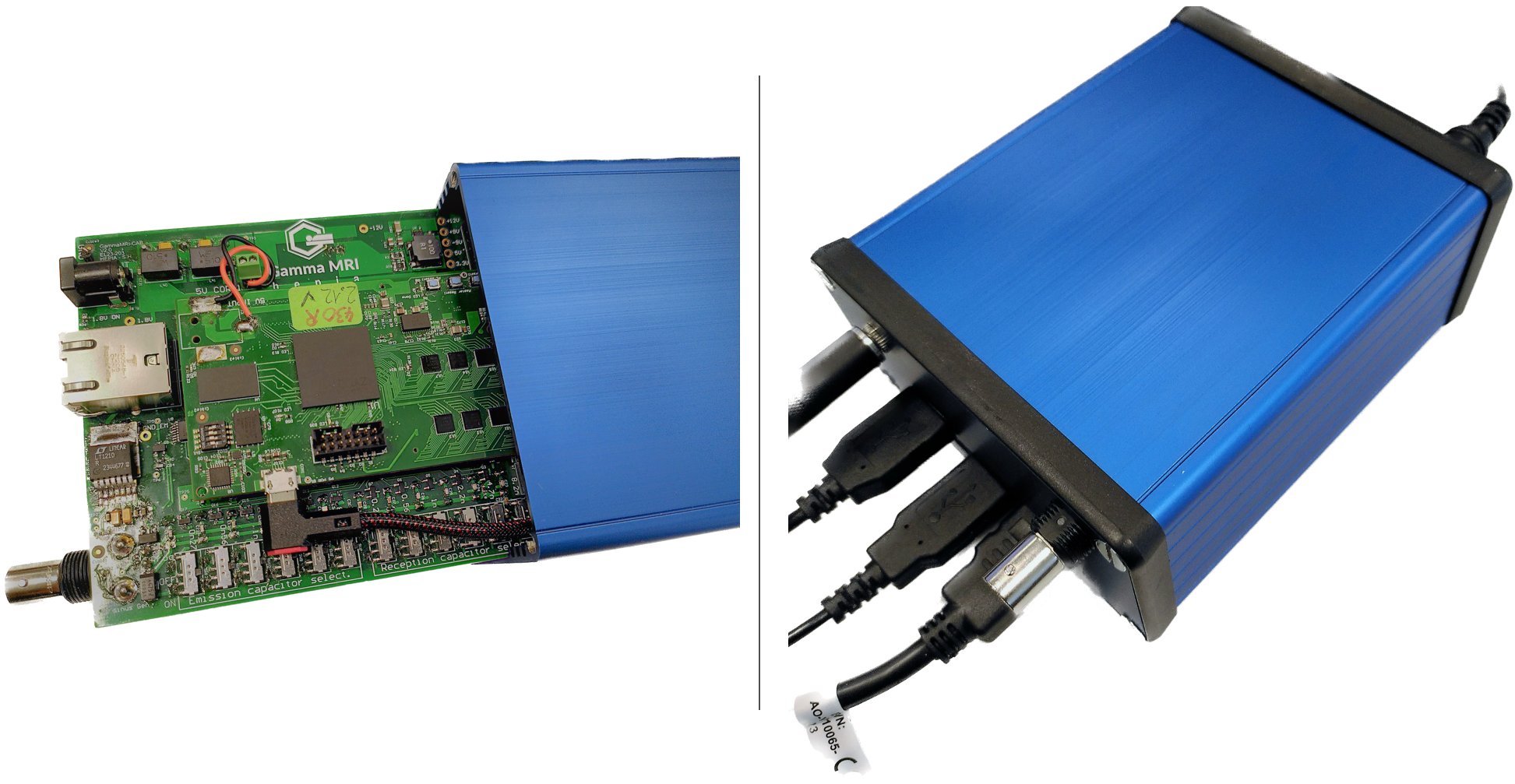Gamma-MRI_NRM - A digital NMR spectrometer operating in the mT field regime
Ingénierie et Architecture

In the context of the European H2020 FET-Open Gamma-MRI project, our objective is to comprehensively elucidate the ultra-low field NMR system that has developed, providing a detailed description of its constituent components, including the RF coils, the electronic board and the user interface software. These elements collectively serve the purpose of generating a magnetic field during the excitation phase of the sample and subsequently capturing the emitted RF signals during their relaxation. At the core of this system resides a digital electronics board endowed with essential components such as an FPGA circuit, a microcontroller and an embedded memory. It is equipped with Ethernet and USB connectivity to facilitate online data acquisition and visualization via a PC. The electronics board assumes the pivotal role of generating an oscillating electromagnetic field orthogonal to the longitudinal axis of B0 (some mT), denoted as B1 (in the order of mT). B1 field is used to maximize the orthogonal component of the net magnetization, enabling NMR analog signal acquisition by the reception coil during relaxation of nuclear spins. An analog to Digital Converter (ADC) digitizes this signal, stores the data and subsequently transmits the data to a PC for visualization and post-acquisition processing and analysis. To facilitate user interaction and system control, a user interface has been developed, enabling configuration of system parameters, retrieval and processing of data thus the visualization of measurements within a graphical interface.
Since the electrical signal to be measured is characterized by exceedingly low amplitudes, typically on the order of a few nanovolts (nV), the primary challenge encountered was the separation of acquired NMR signals from the background electrical noise. To overcome this challenge, an innovative concept was devised, and meticulous attention was paid to the shielding of the system and to the printed circuit board design (PCB), which have been instrumental in enhancing signal fidelity. For validating our system, experiments were first conducted firstly on aqueous solutions doped with CuSO4 salt, in order to decrease the T1 relaxation times of 1H, and secondly with hyperpolarized 129Xe. The capacity of our system to perform NMR measurements under very low magnetic fields (in the mT range) was demonstrated.